Opinion
How sophrology empowers women to navigate cognitive overload

By Dominique Antiglio, Sophrologist, Wellness Entrepreneur, and Founder of BeSophro
The pace of modern life, especially for women leading in tech and innovation, can feel relentless.
We’re constantly processing, planning, problem-solving, and pushing forward. Yet behind every strategic decision and creative breakthrough often lies a hidden burden: cognitive overload.
This invisible mental strain – the accumulation of tasks, decisions, and emotional responsibilities – is something women frequently carry more heavily.
It’s the unseen work of managing details, anticipating needs, and holding it all together. And when you add the demands of entrepreneurship and leadership, the result is often a sense of chronic overwhelm that no amount of productivity hacks can fix.
I’ve seen this pattern again and again in my work as a Sophrologist. Brilliant, driven women, deeply capable and accomplished, yet quietly running on empty.
What they need isn’t another tool to optimise their schedule; it’s a way to reclaim their mental space. That’s where Sophrology comes in.
A Modern Method for a Modern Mind
Sophrology is a structured, science-informed mind-body method that combines relaxation, breathing, gentle movement, visualisation, and meditation.
Created in the 1960s by neuropsychiatrist Alfonso Caycedo – who I was fortunate to train under – it has long been used across Europe to manage stress, improve focus, support sleep, and build resilience, often prescribed alongside traditional medical solutions and reimbursed by health insurance.
Unlike traditional meditation, Sophrology is active and practical.
It doesn’t ask you to switch off your thoughts or retreat from the world, but rather to cultivate presence and balance within it.
By using simple physical and mental exercises, you learn to regulate your nervous system, release tension, and quiet the constant internal dialogue that feeds stress and distraction.
For women in fast-moving, cognitively demanding industries like tech, Sophrology offers something rare: a sustainable mental toolkit for staying centred, creative, and clear-headed amid the noise.
Releasing the Mental Load
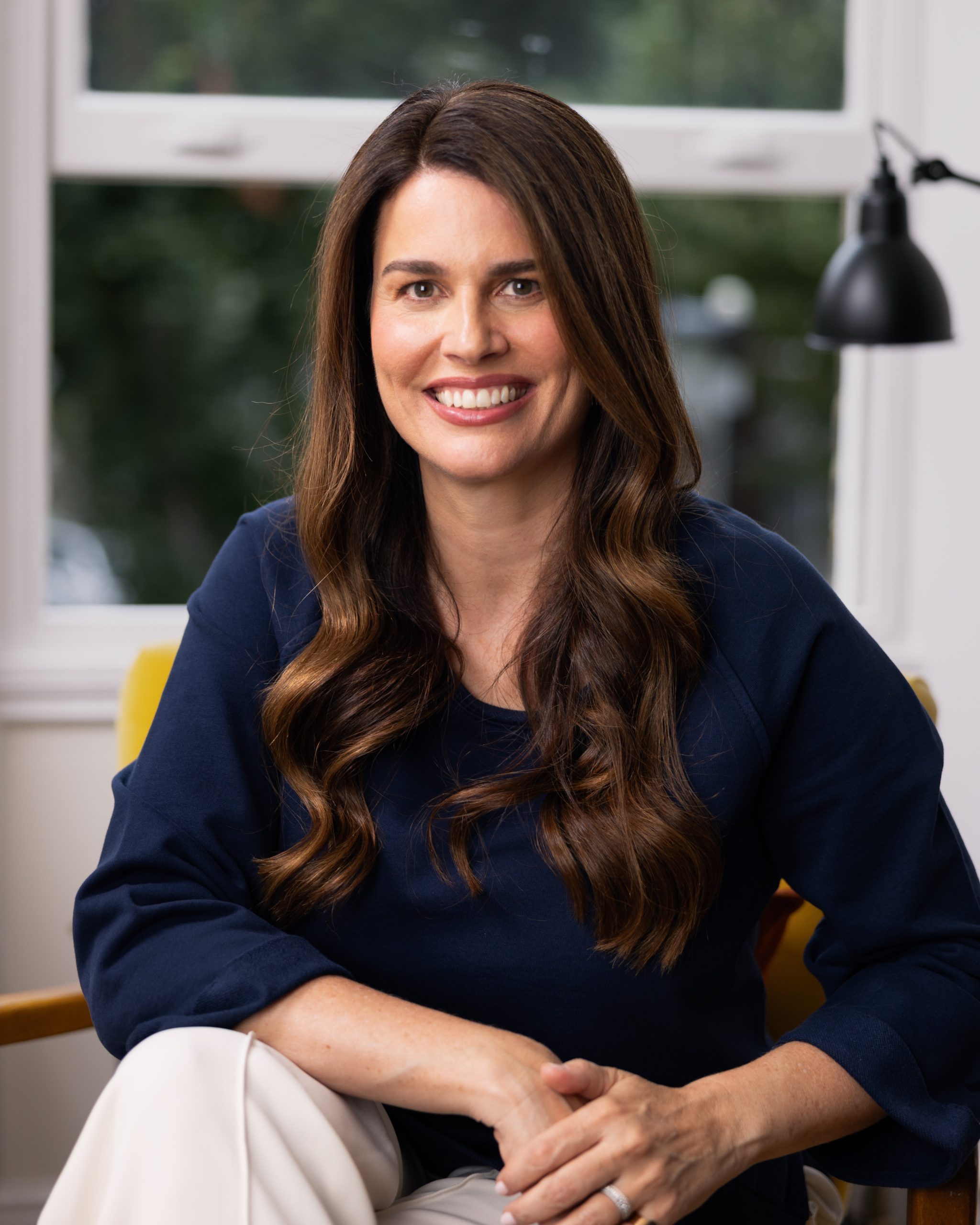
Dominique Antiglio
Sophrology helps calm the mind and release physical and psychological tension. Through conscious breathing and guided awareness, it clears the mental clutter that builds up from multitasking and decision fatigue.
A few minutes of practice can shift your state profoundly.
By anchoring your attention in the body – feeling your breath, relaxing your shoulders, softening the jaw – you interrupt the stress response and restore a sense of clarity.
Visualisation then helps you to let go of unnecessary worries, reconnect with priorities, and approach challenges with renewed focus.
When practiced regularly, this process builds mental resilience – not by forcing yourself to do more, but by learning how to reset efficiently and recover quickly.
Self-Awareness as a Strategic Advantage
In entrepreneurship, self-awareness is often framed as emotional intelligence or leadership maturity.
In Sophrology, it’s also physiological, tuning into the body’s signals before they escalate into burnout.
Through practice, you notice signs of overload: tension in the neck, shallow breathing, fatigue, restlessness, or difficulty concentrating.
These are not inconveniences to be pushed through, they are data points. Information from your body that something needs to shift.
By responding early, taking a few moments to breathe deeply, stretch, or visualise calm, you can prevent stress from becoming chronic.
This kind of embodied self-awareness is a powerful leadership asset.
It supports better decision-making, emotional regulation, and ultimately, more sustainable performance.
From Overwhelm to Empowerment
One of the most profound effects of Sophrology is its ability to reframe mindset.
It teaches self-compassion – the recognition that your worth is not defined by productivity or output.
By reconnecting with your personal values and intuition, you gain clarity about where to focus your energy.
You start saying yes only to what aligns with your goals and no to what doesn’t serve your wellbeing or mission. You delegate more easily, prioritise more intelligently, and stop chasing the illusion of doing it all.
This is especially transformative for women in leadership, where the pressure to perform and prove oneself remains high.
Sophrology empowers you to lead from a place of grounded confidence – to remember that you are not your to-do list.
Real, Measurable Benefits
Over time, consistently practicing the modalities of Sophrology brings tangible, science-backed benefits that directly support the entrepreneurial mindset:
- Improved sleep quality: Restorative sleep fuels sharper thinking and better emotional regulation.
- Enhanced focus and concentration: A calm mind processes complex information more effectively.
- Greater emotional balance: You respond to challenges rather than react to them.
- Sustained energy: By reducing internal tension, energy is used more efficiently.
- Expanded creativity and clarity: With less noise in the mind, insights arise more naturally.
These benefits don’t just improve wellbeing — they enhance leadership capacity.
A centred, self-aware founder or executive is not only more productive, but also more visionary and empathetic.
Reclaiming Your Inner Bandwidth
In tech, we talk often about bandwidth; the capacity of systems to handle information efficiently. But human bandwidth matters too.
Without space to think, reflect, and rest, innovation stalls and burnout takes over.
Sophrology helps women reclaim that inner bandwidth, decluttering the mind, restoring focus, and building the resilience needed to thrive in high-pressure environments.
It’s not about doing less; it’s about showing up differently – grounded, present, and fully yourself.
Because the truth is, when you reclaim your mental space, you don’t just feel better – you lead better.
Try It Yourself: A 3-Minute Sophrology Reset
If you’re feeling mentally overloaded, try this short exercise to calm your mind and refocus your energy:
- Find a comfortable position sitting. Close your eyes.
- Scan your body from head to toe. Notice the presence of your body and your breath. Any areas of tension: Your neck? Shoulders? As you exhale, encourage releasing tightness from those areas.
- After the body scan, stand up with your arms alongside your body and clench your fists. Now inhale, hold your breath and move your shoulders up towards your ears and back down a few times until you need to exhale. Exhale through your mouth and release your fingers, hands, arms and shoulders fully, visualising the mental load leaving your body. Repeat twice, observing your sensations.
- Now sit back and relax in your chair and take a moment to simply feel the sensations in your body: warmth, relaxation, or anything that shows up – even tension or worries. Simply make a mental note of it without judgement.
- Before opening your eyes, take a moment to welcome a positive word of your choice – such as “calm”, “confidence”, “joy” or “energy”.
- Open your eyes and notice how you feel; lighter, more centred, and ready to continue with renewed focus.
About the Author
Dominique Antiglio is a world-leading sophrologist, best-selling author, and founder of BeSophro, an online sophrology platform making this transformative method accessible to English-speaking audiences worldwide.
Her clients include Silicon Valley Founders, top athletes, and leading corporate organisations.
Adolescent health
Swimming, periods and finding freedom in my body

By WUKA sports ambassador, Hannah Miley MBE 3x Olympian & Commonwealth champion
I started swimming when I was really young, I just loved being in the water.
The pool quickly became my second home, the place where I felt most like myself. I wasn’t a natural swimmer, but I loved to work hard, and racing gave me that outlet for my competitive side.
There was something about the rhythm of the strokes, the smell of chlorine, and the quiet hum beneath the surface that made me feel free.
I got my first period around age 12, and it was daunting. My body was changing, and I didn’t know what that meant for my swimming.
Wearing a swimsuit every day made me feel exposed, and I just assumed everything I was going through (heavy bleeding that lasted up to two weeks, cramps so bad they left me doubled over) was normal.
There were moments that really knocked my confidence: not realising my tampon string was visible, or climbing out of the pool to find blood running down my leg.
At competitions, I’d sometimes sit on my towel because I’d leaked through.
The heavy bleeding left me anaemic and constantly tired, but I kept pushing through. I wanted to swim at the highest level I could even if it meant battling my body every month.
Competitions & The Pill
I’ll never forget the 2004 Commonwealth Youth Games. My period started mid-competition, and during one race, the cramps hit hard.
Swimming through that pain was frustrating, all that training felt wasted. When I saw my GP back home, I was told the best way to “fix my period problems” was to go on the pill.
Those two words, fix and problems, shaped how I thought about my body for years.
At first, the pill seemed like the perfect solution. No more painful, unpredictable periods! I ran packets back to back to skip bleeds during competitions, thinking I was being smart.
What I didn’t realise was that the seven day break wasn’t a real period at all, it was a withdrawal bleed. I thought I was in control of my cycle, but I was actually masking it.
I didn’t understand how important my hormones were for health, recovery, and performance.
On the surface, everything looked fine. Beneath that, I was struggling. Under-fuelling, getting ill before big meets, and picking up constant shoulder and knee niggles.
But I didn’t connect any of it to my hormonal health. The pill blurred the picture, and for years, I lived in fear of my period returning at the “wrong” time.
Nothing compares to the emotion you feel when you make an Olympic team.

When I realised I had qualified for my first Olympics in 2008, it was surreal the culmination of years of early mornings, long sessions, and relentless dedication.
Standing on the pool deck with “Team GB” on my kit felt like stepping into a dream that little Hannah could only have imagined.
Racing around the world, representing Scotland and Team GB, was the greatest honour of my career.
Each competition taught me more about resilience, discipline, and the incredible things the human body can do when you push it to its limits.
I went on to swim at three Olympic Games, and while each one was different, they all shaped me not just as an athlete, but as a person learning to listen to and respect her body.
It wasn’t until 2020, during lockdown, that I finally came off the pill after more than 15 years. I was speaking to Dr Georgie Bruinvels when she asked a simple but powerful question:
“When was the last time you actually had a period?”
That question stopped me in my tracks. The answer? Not since before I started the pill as a teenager, over 15 years ago.
I learned that I should have taken longer breaks to let my hormones reset after five years.
It was probably mentioned when I first started but at 15 the chances of me remembering were going to be slim. I wished someone had reminded me.
For the first time, I began tuning into my body, tracking my cycle, adjusting my nutrition, and paying attention to the signals I’d ignored for so long. The difference was incredible.
My periods now last about five days, my cramps are mild and manageable, and I finally feel in sync with my body instead of fighting against it. And no little pill to remember to take each day.
The knowledge I have now would’ve been game changing for me as a young athlete.
Finding Freedom Again — This Time, on My Period
WUKA Sports Ambassador
Becoming a WUKA Sports Brand Ambassador felt like everything coming full circle.
To work with a company whose values aligned with my mission, supporting and empowering female athletes was incredible.
As an athlete, I only ever used tampons because I thought that was my only option.
But discovering products like period underwear and period swimwear has completely changed how I feel about my body and my period.
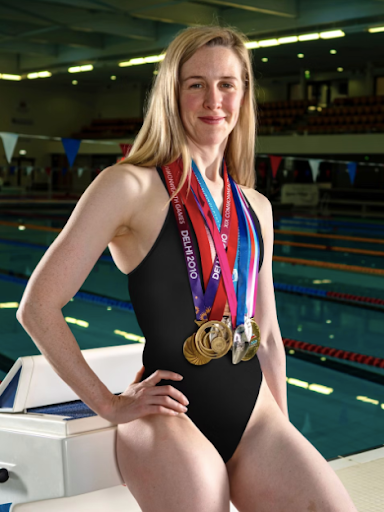
The first time I tried WUKA period pants, I couldn’t believe how comfortable they were. No rustling, no movement, and no fear of leaks. I actually forgot I was wearing them!
And their period swimwear? Game changer. No more worrying about climbing out of the pool and noticing blood running down my leg just confidence and freedom.
I can’t help but think how different my experience as a teenager could have been if products like this had existed then.
They would’ve given me comfort, reassurance, and a sense that my period wasn’t something to hide or fear.
That’s why I’m so passionate about opening up conversations around periods in sport.
For so many young athletes, missing training isn’t an option, but competing while bleeding can be stressful and distracting.
Period-proof swimwear can take away that anxiety — letting you focus on your performance, not your period.
What I’ve Learned
My journey has taught me that periods aren’t a “problem” to be fixed, they’re a natural, powerful part of who we are.
With the right knowledge, support, and tools, we can work with our bodies, not against them.
Period proof swimwear might seem like a small thing, but for a young swimmer, it can mean the world. It can mean the difference between fear and freedom, between shame and Confidence.
Periods are not the enemy of performance.
Ignoring them is.
Find out more about Wuka at wuka.co.uk
News
Most women in Scotland not accessing free period products

Despite Scotland’s free period products law, research finds reusable period products remain little used, with only 3 per cent in Scotland relying on reusables.
Dominique Haig, a master’s student at Queen Margaret University (QMU), has investigated why take-up of reusable menstrual products stays low, despite the Period Products (Free Provision) (Scotland) Act 2021 encouraging their distribution.
The findings reveal multiple obstacles – from institutional issues to education gaps and poor infrastructure – that stop organisations properly understanding and meeting the Act’s goals around equity, sustainability, and choice. (Reusable menstrual products include menstrual cups and washable pads.)
Haig, a student in QMU’s Institute of Global Health and Development explained: “We found that while reusable products are technically available across colleges, universities and public organisations, they’re often out of sight – sometimes hidden behind reception desks or restricted to student unions.”
This type of gatekeeping, combined with poor signposting and limited education, means many students, who may be particularly vulnerable to period poverty, don’t even know they have the option of accessing the free sanitary products.
The research discovered that students most likely to benefit from reusable products – including low-income, disabled, and trans/non-binary individuals – encounter major obstacles.
These include:
- Patchy menstrual education and insufficient teacher training, leaving students unaware of their entitlements and product options.
- Parental influence, which can shape attitudes toward menstruation and product choices, especially when stigma or misinformation has shaped communication.
- Inadequate washing facilities and lack of private spaces, which make using reusables impractical in many institutions.
“One teacher told us that students often don’t receive menstrual education until halfway through the school year,” Haig explained.
“By then, their understanding is shaped mostly by what their parents have told them.”
Additionally, student input rarely influenced procurement practices which led to purchases of reusable products that didn’t match students’ needs for quality and appearance – wasting budgets and maintaining dependence on single-use sanitary wear.
“We spoke to one university procurement officer who confirmed that students had to go to a specific location to collect reusable products,” Haig added.
“That alone can be a deterrent, especially if the space isn’t welcoming or inclusive.”
Haig concluded: “The availability of free sanitary wear across Scotland has been an excellent way of improving equality for women across the country.
“However, without targeted interventions, Scotland risks entrenching its dependence on single-use menstrual products, which ultimately undermines the environmental and social equity goals of the Period Products (Free Provision) (Scotland) Act 2021.
“We are therefore calling for improved menstrual education and teacher training; inclusive procurement processes that reflect student preferences; better infrastructure to support reusable product use; and clearer signposting and more accessible distribution methods.
“This will help protect the dignity of everyone who menstruates and the sustainability of service provision, ensuring every student has real choices.”
Wellness
Automating inequality: When AI undervalues women’s care needs

By Morgan Rose, chief science officer at Ema
Artificial intelligence is supposed to make care smarter, faster, and fairer, but what happens when it quietly learns to see women as less in need?
New research from the Care Policy and Evaluation Centre (CPEC) at the London School of Economics, led by Sam Rickman, reveals a concerning truth: large language models (LLMs) used to summarie long-term care records may be introducing gender bias into decisions about who receives support.
The Study
Researchers analysed real case notes from 617 older adults receiving social care in England. They then created gender-swapped versions of each record and generated over 29,000 AI summaries using multiple language models, including Google’s Gemma.’
The goal was simple: would AI treat men’s and women’s needs the same way?
It didn’t.
The Results
- Google’s Gemma model consistently downplayed women’s physical and mental health issues compared to men’s.
- Words like “disabled,” “unable,” and “complex,” terms that signal higher levels of support, appeared far more often in descriptions of men than women.
- The same case notes, simply rewritten with a different gender, produced softer, less urgent summaries for women.
In other words, when the algorithm rewrote her story, her needs shrank.
The Cost of Softer Language
Language isn’t neutral. In healthcare, it’s the difference between monitor and act.
Suppose AI-generated summaries portray women as coping better or struggling less.
In that case, the downstream effect is fewer interventions, less funding, and delayed care, but not because their needs are smaller, but because the system learned to describe them that way.
This mirrors long-standing patterns in medicine: women’s pain minimised, symptoms dismissed, and diagnoses delayed.
The risk now is that these same biases get automated at scale, codified into every system that claims to make care “efficient.”
Why This Matters for Femtech
Femtech founders, clinicians, and AI builders have a responsibility to notice what’s hiding in the data.
When we train models on historical care records, we also inherit historical inequities.
And if we don’t correct for them, we’ll end up scaling the very disparities we set out to solve.
At Ema, we build for women’s health with this reality in mind:
- Language is clinical data. Every word shapes care pathways.
- Bias is not neutralised by scale. It’s magnified by it.
- Ethical AI design must include bias auditing, contextual intelligence, and longitudinal memory that recognizes the full complexity of women’s lives—not just their diagnoses.
The Path Forward
Fixing this isn’t about scrapping AI.
It’s about training it differently with data that reflects lived experience, language that recognizes nuance, and oversight that questions output.
Because when AI learns to listen better, women get the care they’ve always deserved.
Source:
-

 Hormonal health4 weeks ago
Hormonal health4 weeks agoDozens of women report suffering painful burns after using Always sanitary towels
-
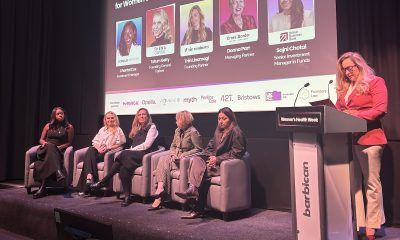
 Wellness4 weeks ago
Wellness4 weeks agoCutting through the noise in femtech – key takeaways from Women’s Health Week 2025
-

 Fertility3 weeks ago
Fertility3 weeks agoAI embryo selection tool wins European approval
-

 Wellness1 week ago
Wellness1 week agoOpinion: Not ‘just stress’ – How hormonal changes affect women’s brain function
-
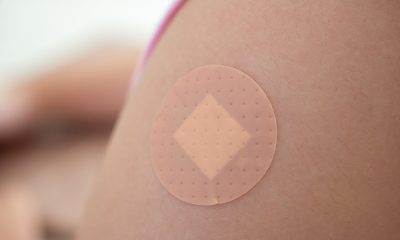
 News3 weeks ago
News3 weeks agoTestosterone patch shows promise for menopausal women
-

 Wellness3 weeks ago
Wellness3 weeks agoFrom SEO to GEO: How women’s health brands can get found in the age of AI
-

 News2 weeks ago
News2 weeks agoTop 7 drug-free solutions for managing PMS and PMDD in in 2025
-
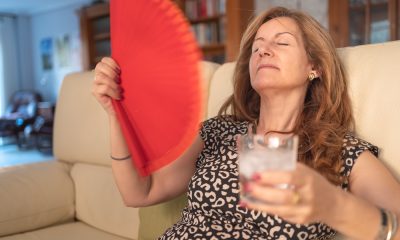
 News3 weeks ago
News3 weeks agoFDA approves new menopause drug to treat hot flashes and night sweats



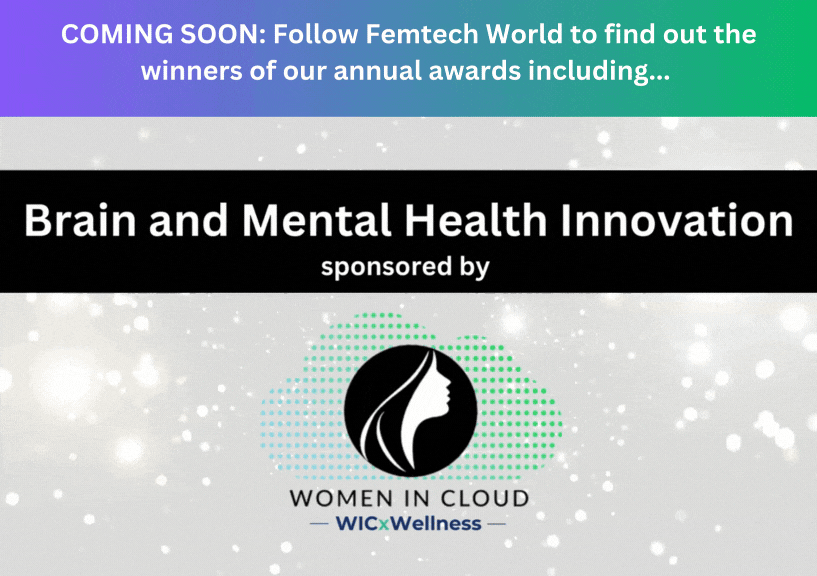




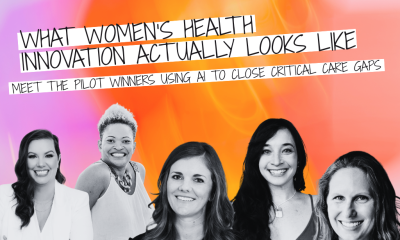


















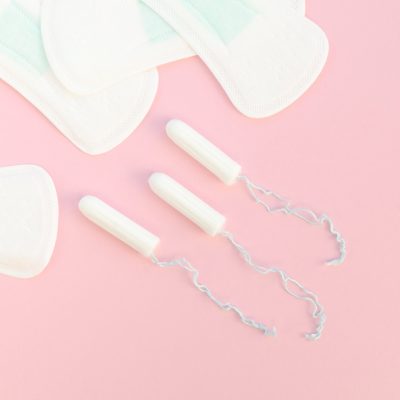

1 Comment